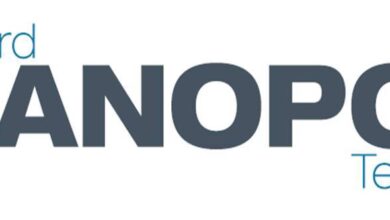Three Day Online Biostatistics for the Non-Statistician Training Course – ResearchAndMarkets.com

DUBLIN–(BUSINESS WIRE)–The “Biostatistics for the Non-Statistician Training Course” training has been added to ResearchAndMarkets.com’s offering.
The focus of the seminar is to give you the information and skills necessary to understand statistical concepts and findings as it applies to clinical research, and to confidently convey the information to others.
Statistics is a useful decision making tool in the clinical research arena. When working in a field where a p-value can determine the next steps on development of a drug or procedure, it is imperative that decision makers understand the theory and application of statistics.
Many statistical software are now available to professionals. However, these software were developed for statisticians and can often be daunting to non-statisticians. How do you know if you are pressing the right key, let alone performing the best test?
This seminar provides a non-mathematical introduction to biostatistics and is designed for non-statisticians. And it will benefit professionals who must understand and work with study design and interpretation of findings in a clinical or biotechnology setting.
Emphasis will be placed on the actual statistical (a) concepts, (b) application, and (c) interpretation, and not on mathematical formulas or actual data analysis. A basic understanding of statistics is desired, but not necessary.
Seminar Includes:
- Certificate
- PDF copy of the Handouts
- Q/A Session
- Live Instructor led 3 Days Web Seminar & Statistical Analysis Plan Template provided by the faculty.
Learning objectives
- Understand the statistical portions of most articles in medical journals.
- Do simple calculations, especially ones that help in interpreting published literature.
- Avoid being misled by foolish findings.
- Knowledge of which test when, why, and how.
- Perform simple analyses in statistical software.
- Communicate statistical findings to others more clearly.
Key Topics Covered:
Agenda Day 1: Basics
Session 1: Why Statistics
- Do we really need statistical tests?
- Sample vs. Population
- I’m a statistician not a magician! What statistics can and can’t do
- Descriptive statistics and measures of variability
Session 2: The many ways of interpretation
- Confidence intervals
- p-values
- Effect sizes
- Clinical vs. meaningful significance
Break 10 mins
Session 3: Types of Data and Descriptive Statistics
- Levels of data: Continuous, Ordinal, Nominal
- Normal distribution and it’s importance
- Graphical representations of data
- Data transformations, when and how
Break 10 mins
Session 4: Common Statistical Tests
- Comparative tests
- Simple and Multiple regression analysis
- Non-parametric techniques
Q&A
Agenda Day 2: Special Topics
Session 1: Logistic Regression
- When and why?
- Interpretation of odd ratios
- Presentation of logistic regression analysis and interpretation
- Fun with contingency tables
Session 2: Survival Curves and Cox Regression
- History, theory, and nomenclature of survival analysis
- Kaplan-Meier Curves and Log Rank Tests
- Proportional Hazards
- Interpretation of hazard ratios
- Presentation of KM curves and Cox regression analysis and interpretation
Break 10 mins
Session 3: Bayesian Logics
- A different way of thinking
- Bayesian methods and statistical significance
- Bayesian applications to diagnostics testing
- Bayesian applications to genetics
Break 10 mins
Session 4: Systematic Reviews and Meta-Analysis
- Why perform a systematic reviews and/or meta-analysis?
- A bit of history and reasoning for systematic reviews and/or meta analysis
- Terminology
- Steps in performing a Systematic Review
- Steps in performing a Meta-Analysis
Agenda Day 3: Further Understanding in Clinical Research
Session 1: Other Tests
- Non-Parametric tests
- Test for equivalency
- Test for non-inferiority
Break 10 mins
Session 2: Power and Sample Size
- Theory, steps, and formulas for determining sample sizes
- Demonstration of sample size calculations with GPower software
Session 3: How to Review a Journal Article
- General steps on article review
- Determining the quality of a journal or journal article
- Looking for limitations (all studies have them)
Break 10 mins
Session 4: Developing a Statistical Analysis Plan
- Using FDA (for the U.S. audience) or MHRA (for U.K. audience) guidance as a foundation, learn the steps and criteria needed to develop a statistical analysis plan (SAP)
- An SAP template will be given to all attendees
For more information about this training visit https://www.researchandmarkets.com/r/y6nq70
Contacts
ResearchAndMarkets.com
Laura Wood, Senior Press Manager
[email protected]
For E.S.T Office Hours Call 1-917-300-0470
For U.S./CAN Toll Free Call 1-800-526-8630
For GMT Office Hours Call +353-1-416-8900




